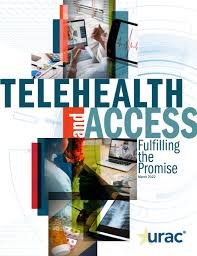Introduction to Authority Magazine Telehealth Best Practices
The healthcare landscape has experienced rapid changes in recent years, with telehealth emerging as a key component of modern care. The demand for remote healthcare services has skyrocketed, particularly due to the COVID-19 pandemic, and it’s clear that telehealth is here to stay. As the practice continues to evolve, it’s essential for healthcare providers to follow the best practices that ensure quality, security, and a positive patient experience. This is where Authority Magazine Telehealth Best Practices come into play. In this article, we will explore these best practices, why they matter, and how healthcare professionals can implement them to enhance their telehealth services.
Table of Contents
Understanding the Importance of Authority Magazine Telehealth Best Practices
Telehealth involves the use of technology to provide remote healthcare services, such as consultations, monitoring, and diagnosis. Given the sensitive nature of healthcare data, ensuring that telehealth practices are efficient and secure is paramount. Authority Magazine Telehealth Best Practices offer a framework for organizations to provide telehealth services that are safe, effective, and patient-centered. Adhering to these best practices helps improve patient outcomes, increase accessibility to care, and maintain the integrity of the healthcare system.
Key Elements of Authority Magazine Telehealth Best Practices
- Clear Communication Channels
Effective communication is critical in telehealth. One of the primary Authority Magazine Telehealth Best Practices is ensuring that patients and providers have clear, reliable communication channels. This includes using secure video conferencing platforms, ensuring that the technology is easy to use, and providing clear instructions for patients before and during their appointments. It’s also important to offer various communication methods, such as chat or phone support, for patients who may struggle with technology.
- Ensuring Privacy and Security
Telehealth introduces unique challenges regarding patient privacy and data security. Following Authority Magazine Telehealth Best Practices, healthcare providers must ensure that patient data is encrypted and that secure platforms are used for communication. This means adhering to industry standards like HIPAA (Health Insurance Portability and Accountability Act) for data protection and ensuring that all telehealth interactions comply with legal privacy guidelines.
- Comprehensive Patient Preparation
Another critical aspect of Authority Magazine Telehealth Best Practices is preparing patients for their telehealth experience. This preparation includes ensuring that patients have the necessary technology (such as smartphones, tablets, or computers) and internet access. Providers should also take time to educate patients on how to use the technology, including troubleshooting tips in case issues arise. By making sure patients are ready, providers can help prevent frustration and ensure a smoother experience.
- Clear Documentation and Follow-ups
Telehealth appointments require careful documentation to ensure that all aspects of patient care are recorded. Authority Magazine Telehealth Best Practices emphasize the importance of maintaining accurate and detailed records of telehealth consultations, just as providers would for in-person visits. Follow-up communications, including test results and recommendations, should also be sent promptly to keep patients informed and involved in their care.
- Continuous Training for Healthcare Providers
Healthcare providers must be trained in the technology and etiquette of telehealth. Following Authority Magazine Telehealth Best Practices, providers should participate in regular training to stay up-to-date with the latest advancements in telehealth tools and patient management. This includes understanding how to communicate effectively through a screen, recognizing non-verbal cues, and providing empathetic care in a virtual setting.
The Benefits of Implementing Authority Magazine Telehealth Best Practices

- Improved Patient Access
One of the most significant advantages of telehealth is the ability to reach patients who may have difficulty accessing in-person care. By following Authority Magazine Telehealth Best Practices, healthcare providers can extend their services to rural or underserved communities, helping to bridge the gap in healthcare access. Telehealth also allows for greater flexibility in appointment scheduling, reducing the barriers to care for busy or mobility-impaired patients.
- Enhanced Patient Satisfaction
Patients often find telehealth appointments more convenient and less time-consuming than traditional in-person visits. By ensuring that these appointments are well-organized, secure, and effective, providers can improve patient satisfaction. Authority Magazine Telehealth Best Practices can help create a positive experience, leading to better patient retention and stronger patient-provider relationships.
- Cost-Effectiveness
Telehealth can reduce overhead costs associated with in-person visits, such as travel expenses, facility maintenance, and staff time. By following Authority Magazine Telehealth Best Practices, providers can streamline their operations, cut costs, and potentially offer more affordable care to patients. This is especially beneficial for practices operating on tight budgets or those serving a large number of patients.
Challenges to Overcome When Following Authority Magazine Telehealth Best Practices
- Technology Barriers
While telehealth can offer convenience, technology barriers can limit its accessibility. Not all patients have access to the necessary devices or high-speed internet. Authority Magazine Telehealth Best Practices highlight the importance of addressing these challenges by providing resources such as loaner devices or alternative communication methods. Additionally, healthcare providers should ensure that their technology platforms are user-friendly and accessible to individuals with varying levels of tech-savviness.
- Maintaining the Human Touch
One of the challenges of telehealth is maintaining the personal connection that comes with face-to-face interaction. Although Authority Magazine Telehealth Best Practices stress the use of technology to deliver care, it is crucial that providers maintain a level of empathy and emotional support that is essential in healthcare. This can be done by actively listening, acknowledging patient concerns, and using technology to its fullest potential to make patients feel heard and cared for.
- Legal and Regulatory Compliance
Telehealth operates within a complex regulatory environment. Authority Magazine Telehealth Best Practices suggest that healthcare providers stay updated on the legal requirements surrounding telehealth, including licensing, reimbursement policies, and privacy laws. Ensuring compliance is critical not only for the legal protection of healthcare organizations but also for maintaining patient trust.
Future of Authority Magazine Telehealth Best Practices

As telehealth continues to evolve, the Authority Magazine Telehealth Best Practices will need to adapt to keep pace with advancements in technology, changing regulations, and shifting patient expectations. The future of telehealth will likely see even greater integration of artificial intelligence (AI) and machine learning to enhance diagnostic capabilities, as well as the increased use of wearable devices for remote patient monitoring. Authority Magazine Telehealth Best Practices will continue to focus on ensuring that these innovations are implemented in a way that prioritizes patient care, security, and accessibility.
Also read Decipher the Code zpv bsf bxftpnf: Unveiling the Mystery
Conclusion: The Importance of Adhering to Authority Magazine Telehealth Best Practices
The role of telehealth in modern healthcare is undeniable, and adhering to Authority Magazine Telehealth Best Practices is essential for ensuring its continued success. By focusing on clear communication, security, patient preparation, and provider training, healthcare professionals can create an effective and seamless telehealth experience for their patients. As technology continues to evolve, so too will the best practices that guide telehealth, but the core principles of patient-centered care, security, and accessibility will always remain at the forefront. By embracing these best practices, providers can offer high-quality remote healthcare that is both efficient and compassionate.


